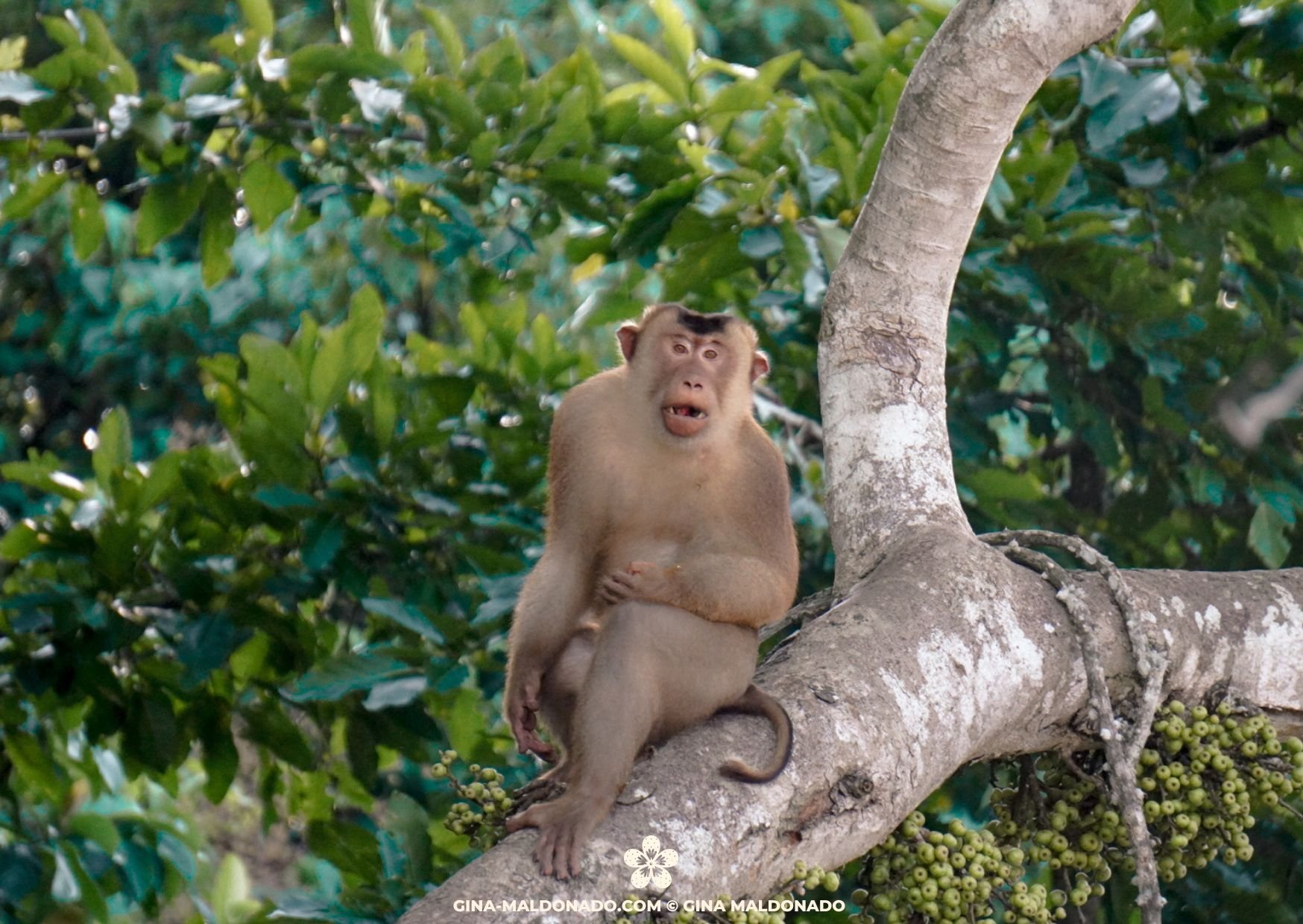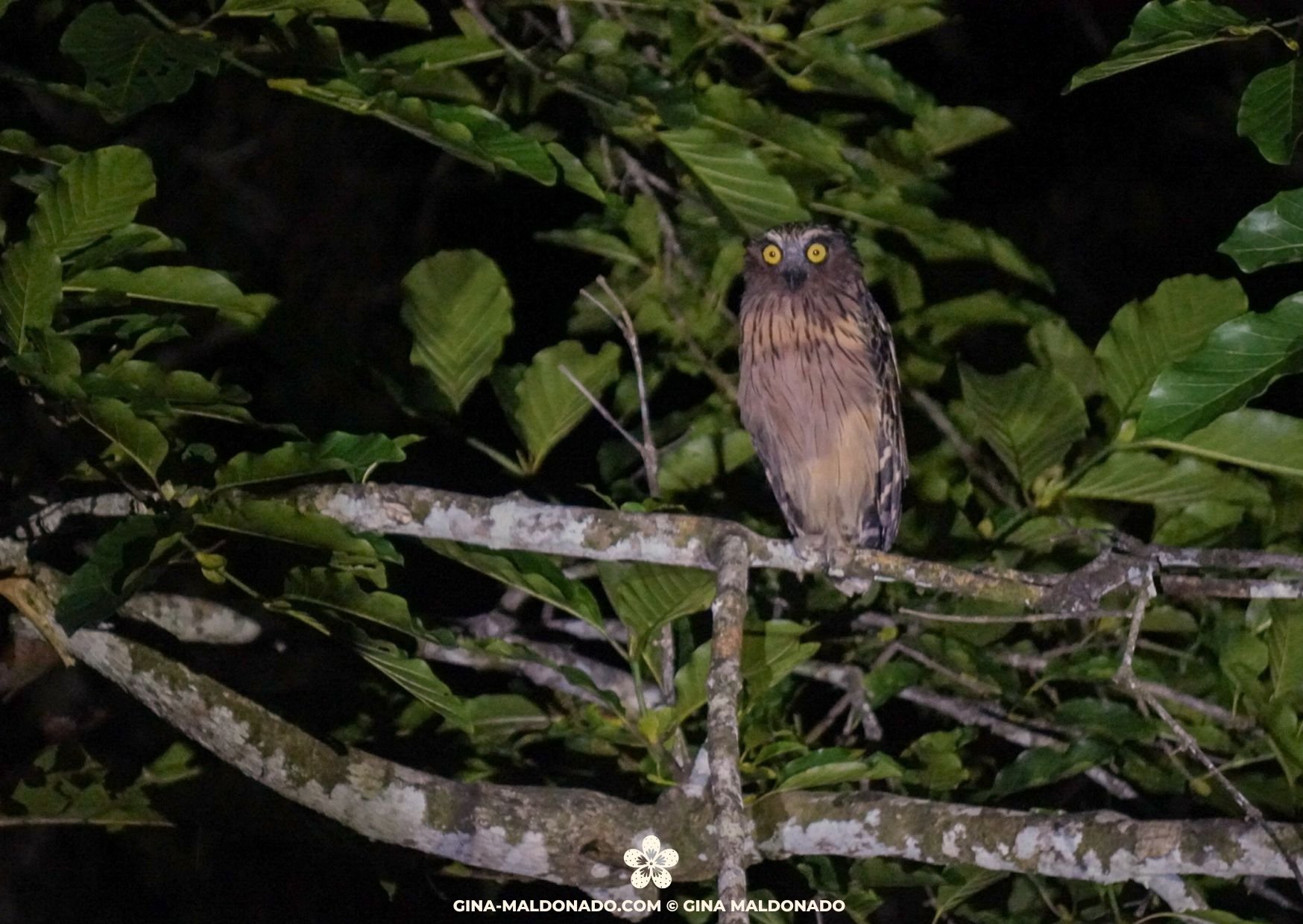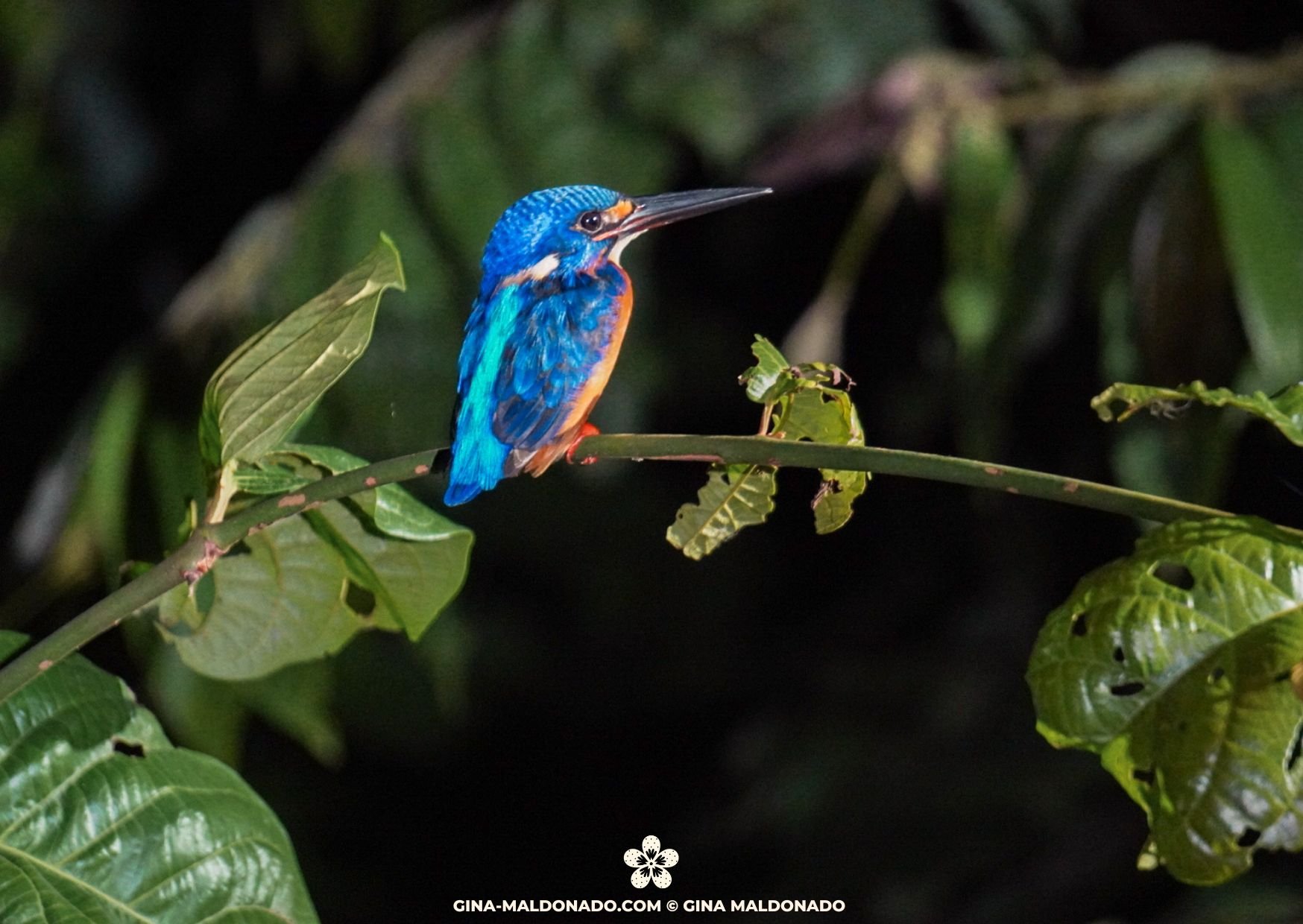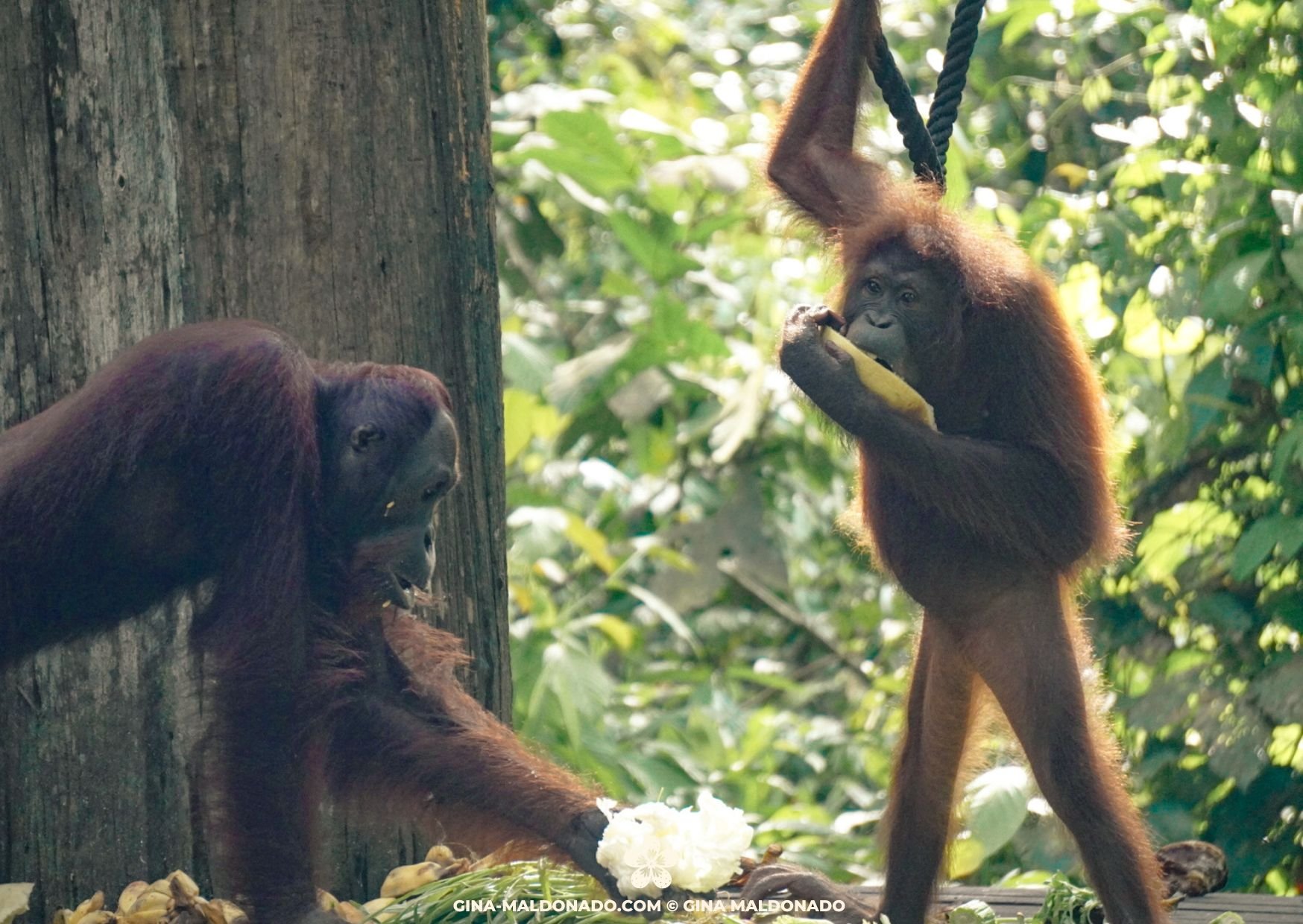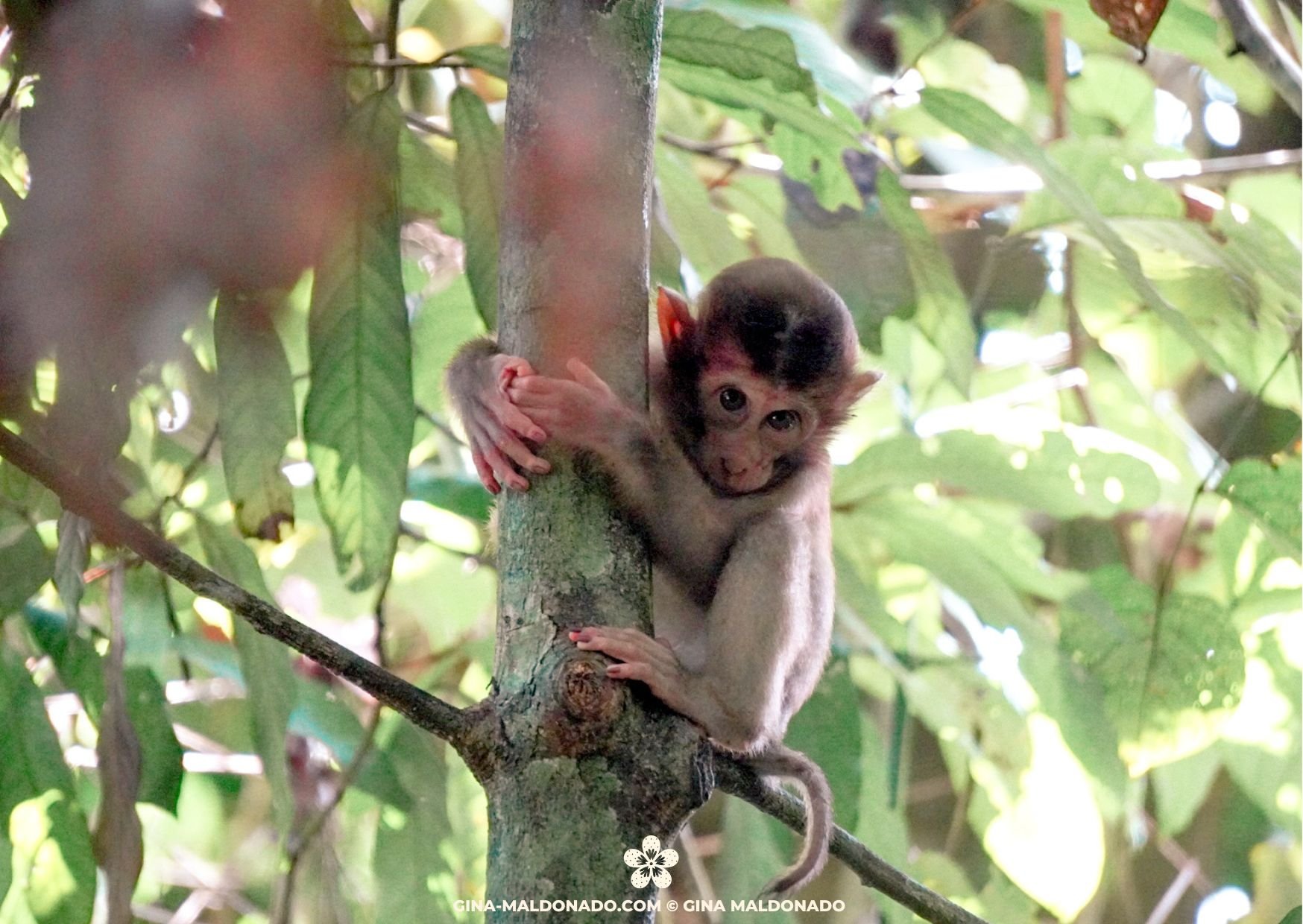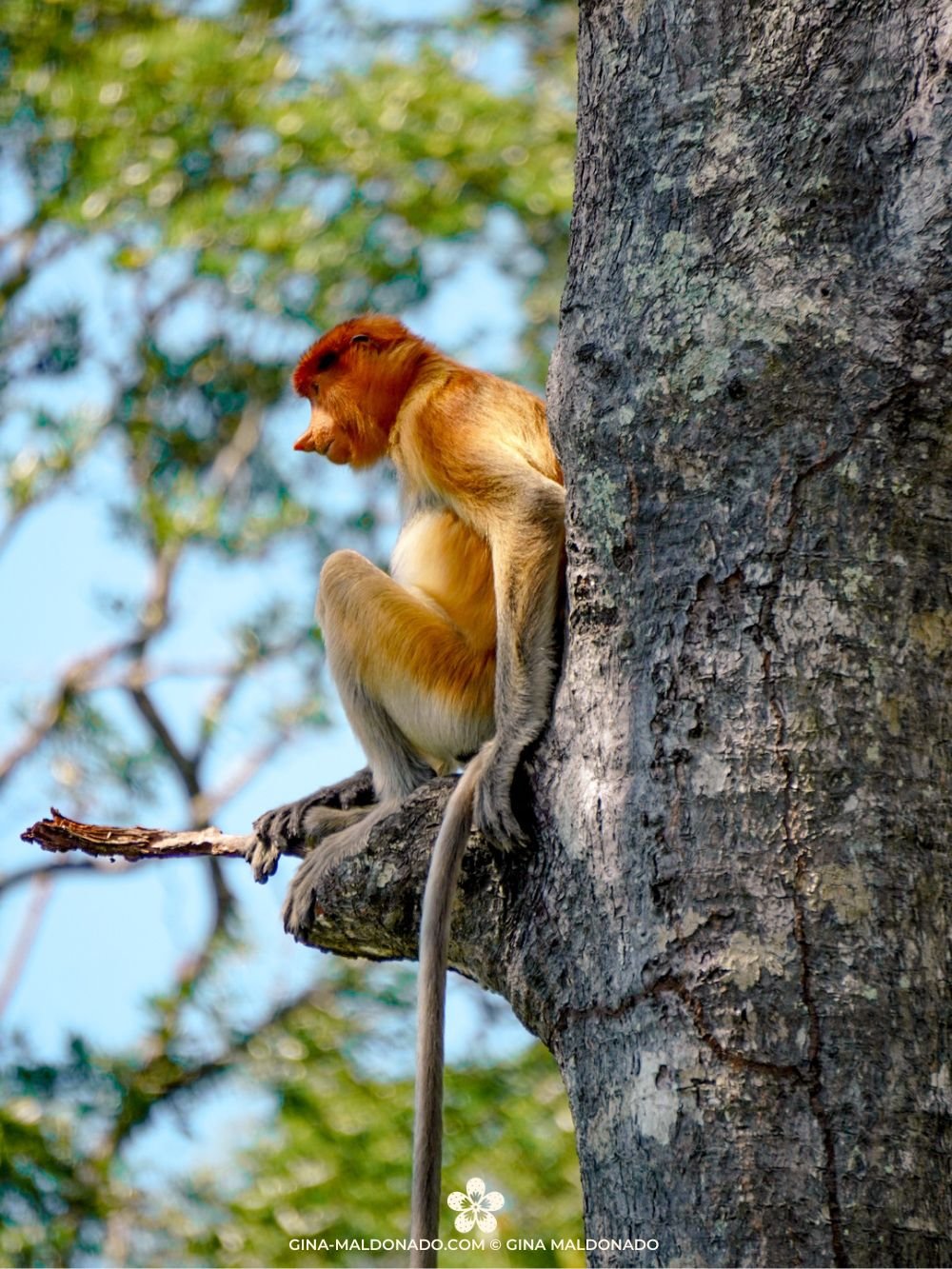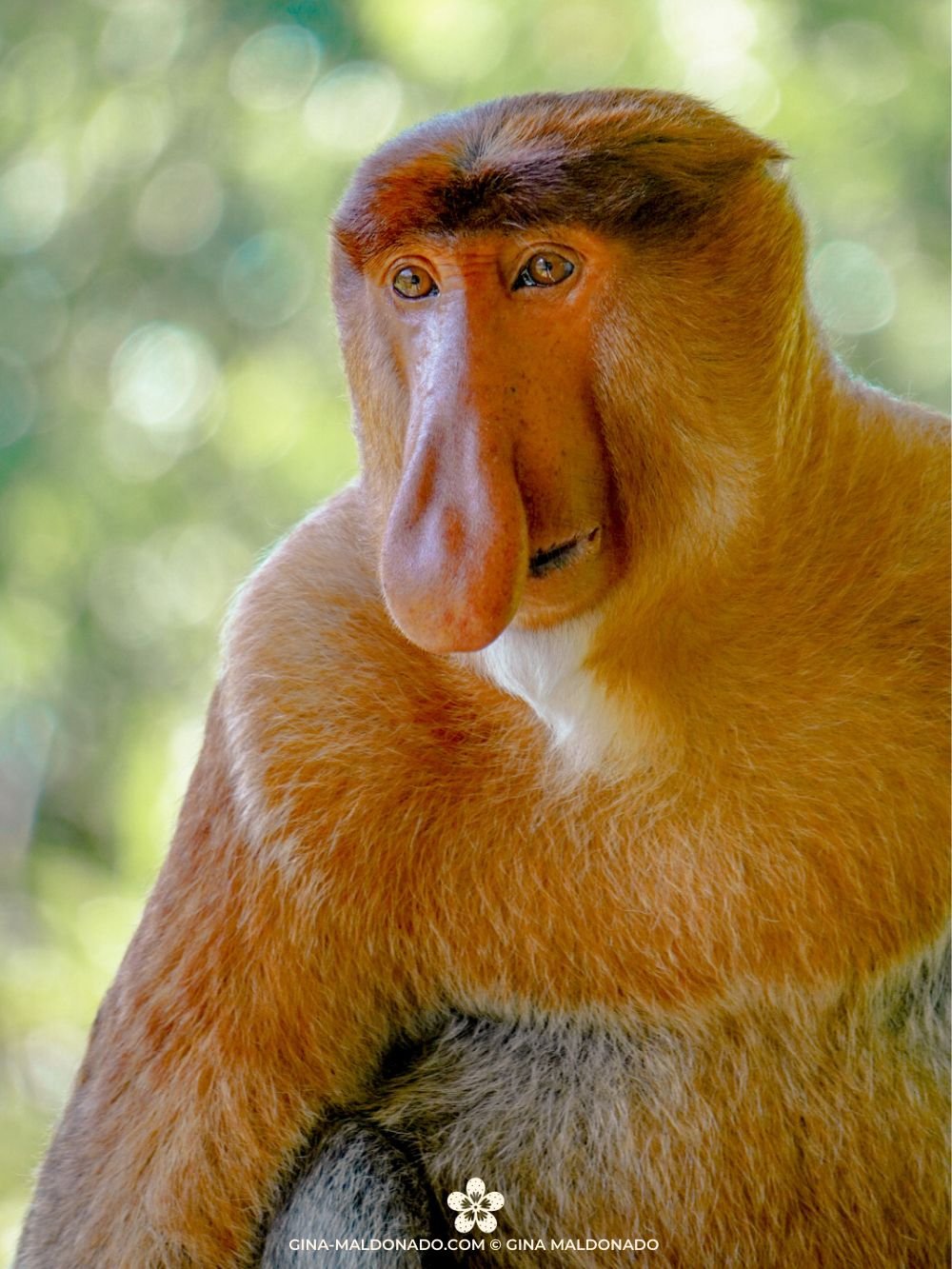A Borneo Story: Finding Beauty and Loss in the Tropical Rainforest
As an animal lover, I’ve been hoping to one day visit Borneo island, my excitement to see the orang-utans and other endemic animals tinged with sadness as I knew I would be witnessing firsthand the impact of human activity on the island's rainforests. The endless rows of oil palm trees visible from air and land, are like a glitch in photoshop where an image gets copied multiple times on the screen and you can’t see anything else. Although the pristine rainforest and its inhabitants are under threat, I'm glad there are still some pockets of untouched jungle where animals and plants can find refuge. That’s what we wanted to see.
We started our journey flying into Sandakan and then traveling by car and boat to reach our jungle lodge on the Kinabatangan river. It was a secluded and peaceful location, surrounded by the sounds of the jungle and even signs warning about crocodiles in the river! With no internet or phone signal, it was a chance to unplug and experience the jungle in all its natural glory.
On our first afternoon, we took a boat tour around the lagoon. We spotted a turquoise and orange kingfisher perched on a tree, its colourful plumage standing out against the lush green backdrop.
We also saw pigtail monkeys swinging through the trees, with a watchful alpha male keeping an eye on the group. The baby monkeys were tumbling around in the branches under the watchful gaze of their mother. Up in the canopy there was also a civet chomping enthusiastically some oil pam fruits. In the water we saw a couple of eagles fishing and swallows plunking their belly in the lagoon.
That night, we went on another boat tour. The first animal we spotted was the proboscis monkey, which has a very distinctive face with a large nose. It was very high up in the top branches of a tree, looking relaxed, feeding on some leaves.
Next we spotted some sleepy macaques, huddling together with their tails intertwined, an owl who looked shocked to see us, more kingfishers and three colourful black and red feathered birds with turquoise and yellow beak - they’re called broadbills-, sleeping together.
It always amazes me that guides can spot animals from very far away and know exactly what kind they are and can share all the information about diet, mating, sleeping patterns, differences between male and female and other interesting facts.
We also did a morning tour and a walking tour at nighttime. It was pouring with rain right before we started the walk so we only managed to see a few animals such as frogs, a greater racket-tailed drongo (a black bird with two long feathers in its tail) who eyed us suspiciously, and surprisingly quite a few white butterflies - I thought they were diurnal animals.
In between boat excursions, we stayed in the lodge to eat and read. Some animals came to find shelter from the heat or to eat from the trees around the lodge. We saw two kinds of civet visiting at night, lizards, geckos, swallows, kingfishers, an owl, and a blue bird I didn’t manage to photograph because I was being attacked by a cloud of mosquitoes.
Although we didn’t see orang-utans by the river, we still had the opportunity to visit the Sepilok Orangutan Rehabilitation Center. This centre is dedicated to rescuing and caring for baby orang-utans until they are ready to be released back into the wild. There is also a platform amongst the trees where wild orang-utans (old and young) can come to feed.
While the orang-utans are wild and only come to the platform if they choose to, they are free to eat as much as they want. When we visited we saw between one and three orang-utans coming to eat. These small numbers are a sign that most other orang-utans in the area could find plenty of fruit in the jungle.
We wondered why the keepers remained on the platform while the orang-utans ate, but soon realised it was to keep away mischievous macaques.
These clever little monkeys tried to sneak onto the platform, feigning innocence while keeping a close eye on the food. In the end, they managed to steal some of the leftovers, much to their delight.
Across from the orang-utan centre, we visited the Bornean Sun Bear Conservation Center, where visitors can view the sun bears from elevated platforms as they eat, play, and relax in their large, naturalistic enclosures. The bears at this centre are taught survival skills, with the ultimate goal of releasing them back into the wild.
Just a few kilometres away from the bear and orang-utan centres, there's also the Rainforest Discovery Center, where visitors can take a walk along elevated platforms among the treetops. This is a great place to spot all sorts of wildlife, including monkeys and lizards. During a nighttime visit we saw giant flying squirrels, and even a colugo with its baby. Colugos are also known as flying lemurs and these unique creatures were a real highlight of the trip!
The final sanctuary we visited was the Labuk Bay Proboscis Monkey Sanctuary. This sanctuary is located on a small area of an expansive oil palm plantation, and is owned by the plantation owner.
The drive to the sanctuary was long and we passed through a landscape dominated by oil palm trees. We finally arrived at the sanctuary and walked to the viewing platform, which was in need of repair. The surrounding area was mostly shrubs and small trees, and the monkeys waited patiently for the feeding time.
These curious creatures are truly unique, with the males' round bellies and large noses, and the females' dainty features. We got to see them really up close, it surprised me how human-like their eyes look and how chilled they are compared with the rowdy macaques.
They sound like cows, mooing and grunting as they move through the trees, the younger ones jumping around waiting for their elders to finish eating the choicest bits before taking their turn. It's an incredible experience to observe these unusual monkeys in their native habitat
Although it was fascinating to see the monkeys up close, it was hard not to think about the impact of the plantation on their habitat.
The story of Borneo is one of beauty and loss, as the destruction of its rainforests continues. While the problem is multifaceted and the causes complex, the international demand for palm oil, timber, and paper is one of the main drivers of deforestation. It is critical that we understand the impact of our actions as consumers, and work to reduce our dependence on these products.
Only then can we hope to protect the unique beauty and biodiversity of Borneo for future generations.



